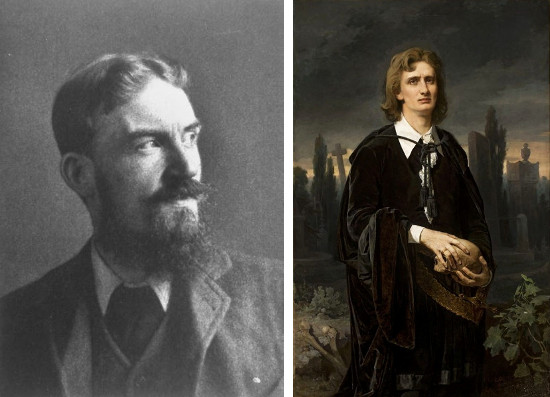
Reviewing Heathcote Statham’s book Form and Design in Music in 1893, George Bernard Shaw decried the “insufferable affectation” of music criticism. He quoted Statham’s analysis of a Mozart symphony:
The principal subject, hitherto only heard in the treble, is transferred to the bass (Ex. 28), the violins playing a new counterpoint to it instead of the original mere accompaniment figure of the first part. Then the parts are reversed, the violins taking the subject and the basses the counterpoint figure, and so on till we come to a close on the dominant of D minor, a nearly related key (commencement of Ex. 29) and then comes the passage by which we return to the first subject in its original form and key.
“How succulent this is,” Shaw wrote, “and how full of Mesopotamian words like ‘the dominant of D minor.’ I will now, ladies and gentlemen, give you my celebrated ‘analysis’ of Hamlet’s soliloquy on suicide, in the same scientific style”:
Shakespear, dispensing with the customary exordium, announces his subject at once in the infinitive, in which mood it is presently repeated after a short connecting passage in which, brief as it is, we recognize the alternative and negative forms on which so much of the significance of repetition depends. Here we reach a colon; and a pointed pository phrase, in which the accent falls decisively on the relative pronoun, brings us to the first full stop.
“I break off here, because, to confess the truth, my grammar is giving out,” he wrote. “But I want to know whether it is just that a literary critic should be forbidden to make his living in this way on pain of being interviewed by two doctors and a magistrate, and haled off to Bedlam forthwith; while the more a music critic does it, the deeper the veneration he inspires.”
(From The World, May 31, 1893.)
